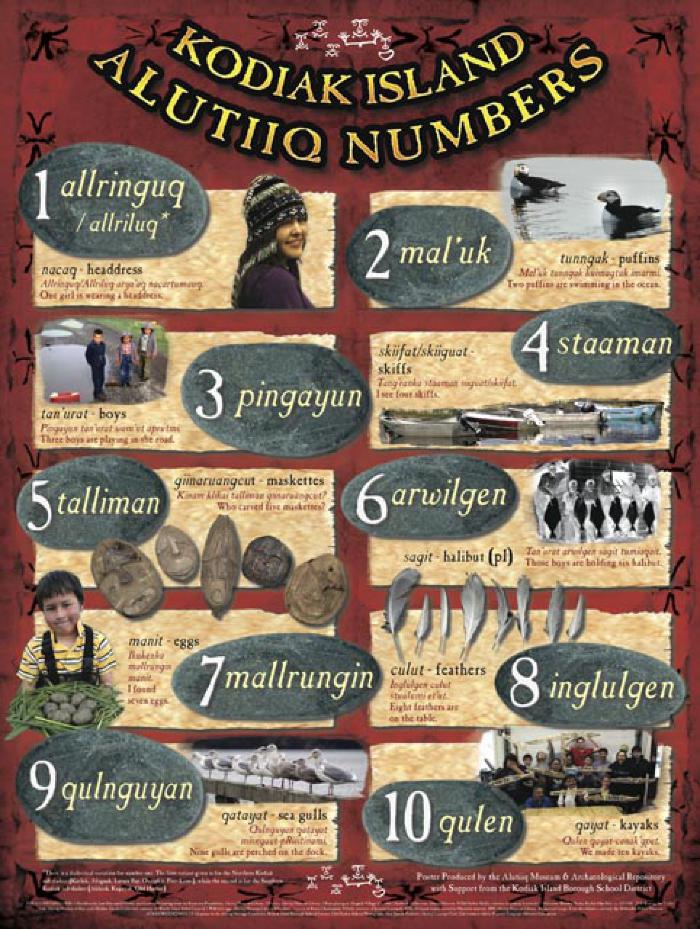Numbers — NuumiRat

Societies throughout the world count and measure objects in distinct ways. For example, Americans use the English measurement system, which features feet, gallons, and miles, while Europeans use the metric system, which divides the world into meters, liters, and kilometers. Among societies without a written language, quantification systems are usually relative, made in comparison to a known amount. Among Alutiiq people, for example, the distance to a neighboring community might be measured in days of travel, or the length of a kayak relative to the size of its owner. Historic sources also suggest that Alutiiq people counted on their fingers and toes—a practice common among societies without written numeral systems. Similarly, an Alutiiq person might run their fingers through their hair to indicate many objects.
One distinctive feature of Alutiiq counting is the way words are pluralized. English speakers differentiate between a single object and many objects by adding an s to a word. For example, the word seal becomes seals. However, Alutiiq speakers pluralized nouns in one of two ways, depending on the number of objects. Many Alutiiq nouns end in q. For example, the word for berry is alagnaq. To say berries, however, a person can either change the q to a k to indicate two berries—alagnak—or to a t to indicate three or more berries—alagnat. While peculiar to English speakers, this is a natural way of enumerating objects in the Alutiiq world.
